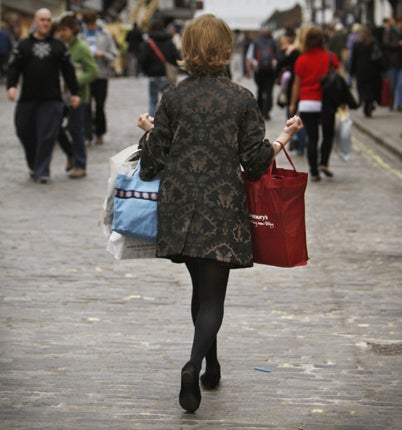'Buy-now, must-have culture' blamed for increase in young women going bankrupt

Young women have overtaken men as the predominant sex falling into bankruptcy. New research from accountancy firm Wilkins Kennedy reveals that 55 per cent of bankrupts under the age of 24 were women last year. Five years ago, that figure was 48.3 per cent and Keith Stevens, a partner at Wilkins Kennedy, blames social pressures to spend for the reversal.
"Young women are very much into the buy-now, must-have culture and they're willing to buy on credit," he says. Writing off debts as a bankrupt has become too easy an option, he adds, but what are the alternatives for young people wanting to tackle their debts?
Firstly, anyone struggling with debt should contact their creditors. Some lenders will accept offers of smaller payments if debtors contact them and explain their situation. Debtors can also get free financial advice from various charities such as the Consumer Credit Counselling Service (CCCS), National Debtline and the Citizens Advice Bureau. These organisations will help debtors to set up a debt management plan and can negotiate with creditors on their behalf, much as a debt management company would do, but without the fee.
One way of avoiding bankruptcy is an individual voluntary arrangement (IVA) made between the debtor and the creditors. It will usually take the form of regular payments over a fixed period of time, typically five years. If 75 per cent of the creditors accept the proposal, a licensed insolvency practitioner is required to prepare a financial report for the creditors and court proceedings. They will also make an application to court for an interim order to stop creditors from petitioning for bankruptcy. However, IVAs are complicated and expensive. Large commissions are taken out of payments and reduce the amount going towards debt. They also have an adverse affect on credit ratings and have a reputation for being sold to unsuitable clients; the CCCS recommends IVAs in just 3 per cent of cases.
Debt relief orders (DRO) are a new, low-cost insolvency alternative introduced in April for people with relatively low levels of debt. Individuals with no more than £15,000 of debt (excluding student loans and secured loans) are eligible to apply for a DRO. Additionally, applicants can have no more than £50 a month surplus income, no more than £300 in assets and they cannot own their own homes. A non-refundable court fee of £90 must be paid before the application will be considered, but once a DRO is in place, accounts are frozen, usually for 12 months. "These have an advantage over bankruptcy because they are much cheaper and could be a better option for younger people who are unlikely to have assets," says Frances Walker from the CCCS.
Anyone who find they owe more than 20 per cent of their take-home pay in unsecured debts should start to make cut-backs. Keeping a spending diary and budgeting carefully will also help. Taking advantage of 0 per cent credit cards will provide some breathing space from interest payments. "It's about maximising your income and making sure you're getting all the benefits you're entitled to," says Ms Walker.
Subscribe to Independent Premium to bookmark this article
Want to bookmark your favourite articles and stories to read or reference later? Start your Independent Premium subscription today.

Join our commenting forum
Join thought-provoking conversations, follow other Independent readers and see their replies